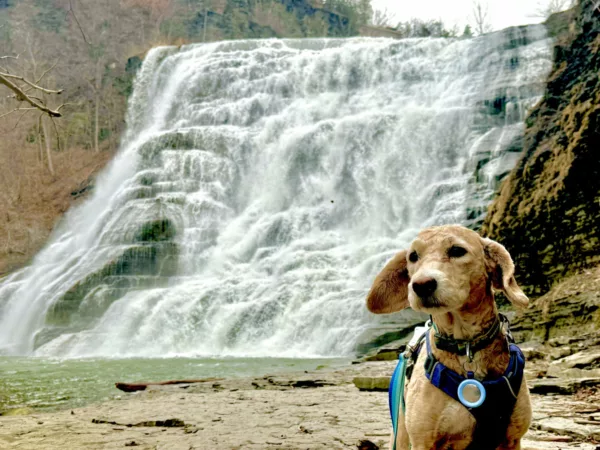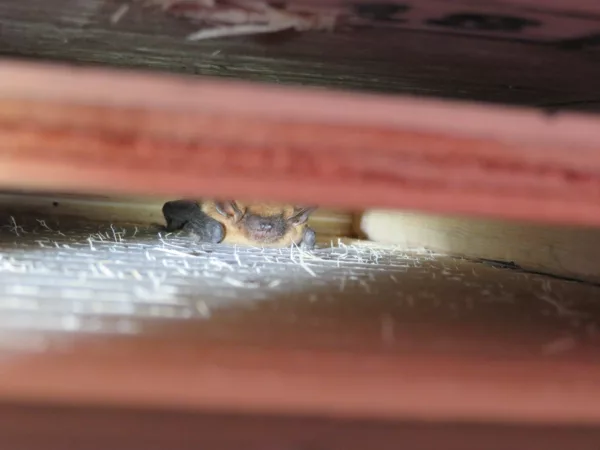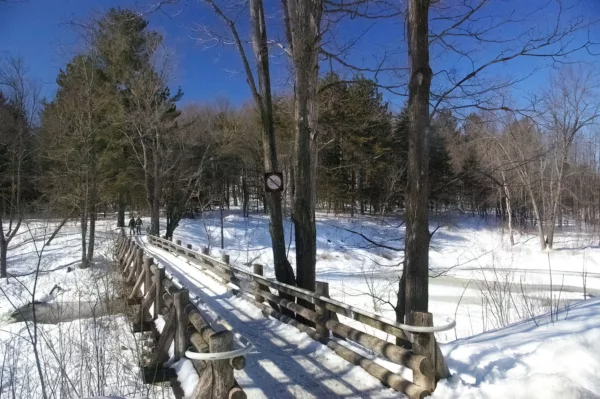Opinion: Forget Bears and the Boogeyman. It’s Your Campfire You Should Be Afraid Of

While spending the better part of 15 years guiding kids and young adults through Ontario’s backcountry, I often encountered fears and anxieties about spending time outdoors, particularly at night. From the logical—like being concerned about bears—to the comical—like being afraid of the boogeyman (or his many aliases), common fears can easily be combatted through reasoning and education.
Statistically speaking, you’re more likely to be killed by a bee than a bear. The North American Bear Center says less than 70 people have been killed by black bears since 1900. Considering that millions of people go camping every year, the odds of a fatal black bear attack are extremely slim. You’ve got better odds at winning a local lottery and being struck by lightning than ending up as a black bears’ snack. You can feel confident exploring with bear spray, bear bells and other prevention techniques.
 iStock
iStock
As for the boogeyman, based on my current research, there has yet to be any confirmed sightings or evidence that he or she exists. In my experience, anxiety surrounding the boogeyman or other scary figures like bigfoot and the sasquatch can be easily defeated with a flashlight and a bedtime story. The origins of many of these urban legends and fairy tales are rooted in a moral or life lesson for children. Childhood scary stories were told as a way of making children aware of various real dangers.
 iStock
iStock
Although some fears are unfounded, others, like a fear of water, are not, and should be addressed. At our core, our fears protect us. Fear goes hand-in-hand with risk assessment. Without fear, risk taking would increase dramatically, as would the chance of injury and death. Don’t diminish or put down a child’s fear; think critically about the root cause and how to best reassure them.
Statistics show that it’s not bears or the boogeyman that pose an imminent danger to children—it’s the campfire.
 Craig Mitchell
Craig Mitchell
During the summer of 2018, I was guiding a trip of 16-year-old boys on a leadership experience through the backcountry of Temagami. The trip came to a crashing halt when a routine situation ended in disaster—and almost a medical evacuation.
We were in the process of unpacking while our ‘leaders of the day’ began preparing dinner. Tents were pitched, bags unpacked, and pasta was being prepared. Peppers were chopped, containers opened, and water boiled. Despite following all the necessary safety precautions, the unpredictable happened: a complete fluke; an accident. Even though the camper was wearing safety gloves and using pot grabbers, his grip slipped, causing the pot of boiling water to spill all over his forearm and hand.
 Craig Mitchell
Craig Mitchell
Within a few minutes, his skin was red and sprinkled with quickly forming blisters. We immediately administered first aid, cleaned the burn, added antibiotic ointment and wrapped it with bandages to keep it clean. Our patient was more embarrassed about delaying dinner than he was concerned about his injury. Of course, it wasn’t long before the realization set in that this injury could jeopardize the rest of his trip.
We decided based on the severity of the burn and the fact it was on his hands and arms (both needed for paddling), that we should find someone more qualified to assess his injury. Fortunately, we were only a short paddle away from a well-known summer camp; one we presumed would have medical facilities. The camp doctor happened to be fishing on the dock as we arrived and, after a brief once over, he praised our first-aid efforts and said that as long as the burn was kept clean and the camper felt comfortable, he could continue with the remainder of the trip.
 Craig Mitchell
Craig Mitchell
Our injured camper was ecstatic with the news, and the group was just as happy to have their friend return. This situation highlights how even when you follow all the necessary safety procedures, unpredictable things can still happen. It always pays to be extra prepared.
 Craig Mitchell
Craig Mitchell
A crackling fire and roasting marshmallows or hot dogs while basking in the glow of a campfire is a time-honoured tradition for many families. It can be a memory that lasts a lifetime, or it can be a disaster waiting to happen. The University of Utah Burn Center found that children are most likely to be burned when left unsupervised, particularly when parents are distracted with the set up or take down of the campsite. The Harbourview Injury Prevention & Research Center at the University of Washington found that campfires are the USA’s leading cause of children’s camping injuries. Just like any other tool, there’s an inherent level of risk involved; safety is determined by how you use it, and a campfire is no different.
 Craig Mitchell
Craig Mitchell
A great idea when camping with children is to use a safety circle around the campfire. Using a rope or physical barricade like benches, select an appropriate distance between your barrier and the fire, usually about one to two metres. This is a great way to provide a visual aid for kids to reference when roasting marshmallows or adding firewood, allowing them to maintain a safe distance. With younger kids, you can make it a fun game by calling it “Your Castle” and having the kids ask the King or Queen for permission to approach.
 Craig Mitchell
Craig Mitchell
Campfire Safety Tips:
- Wear safety gloves when cooking over a fire
- Use a safety barrier or “castle” to keep kids a safe distance away
- Always have adult supervision
- Limit consumption of alcohol around the campfire to reduce the risk of accidental burns. Alcohol was found to be one of the greatest contributing factors for campfire burns in adults and greatly reduces the ability to supervise children attentively
- Pour hot liquids into vessels that are on stable ground, not in your hand
- Walk around, not over, fires or stoves
 Craig Mitchell
Craig Mitchell
Basic Burn First-Aid:
- Remove victim from heat source (Stop, Drop, Roll)
- Clean the area with cool, clean, running water. Don’t use ice. Don’t try to remove any melted material
- Assess the injury (1st, 2nd or 3rd degree burns. Location and severity determine next steps)
- Apply antibiotic ointment like Polysporin and cover with sterile bandages
- If determined to be severe, begin evacuation procedures and seek medical attention
 iStock
iStock














